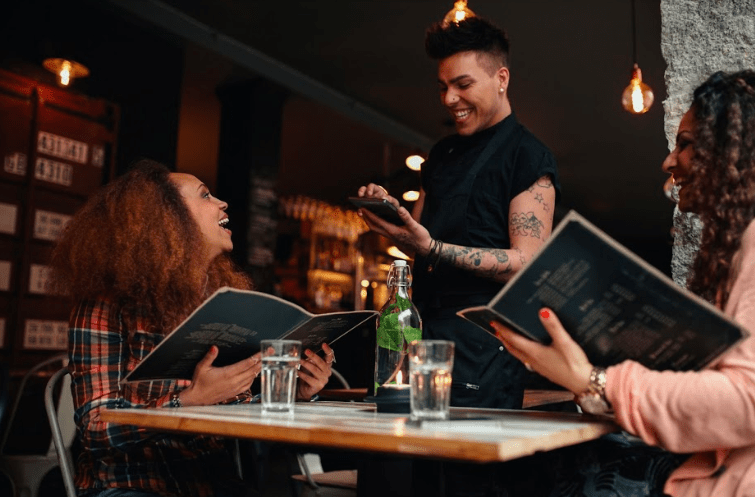No matter what business you are running, customer lifetime value (CLV) is one of the most important things to manage and improve. And this is even more important for restaurants.
Why? The answer is simple.
The more customers you acquire who keep coming back and spending more, the higher your overall revenue will continue to grow.
Likewise, you could reallocate customer acquisition dollars and apply them to other areas of business improvement.
As customer retention costs continue to rise, a loyal customer base becomes increasingly valuable to restaurant owners and operators in today’s extremely competitive industry.
How to Benefit From Increased Customer Lifetime Value
Customer lifetime value refers to how much time and money a customer is projected to spend at your business.
Again, one of the most important business metrics is the lifetime value of customers. In short, it is the expected amount that a single customer will spend at your business during their lifetime of patronage with you.
Customers with a high lifetime value tend to spend more per purchase, spend more often, and remain loyal for years.
The more high-value customers you have, the better your current and future business prospects. Acquiring these customers may take some time. This depends on whether increasing lifetime value is an active goal and one of the methods used in the customer acquisition and retention processes.
However, achieving rapid improvements in customer lifetime value is definitely doable.

How to Improve Your Restaurant CLV
Here are several ways you can begin improving your customer lifetime values at your restaurant.
Identify Your Best Customers
Instead of guessing at the demographics you connect with most, CLV assesses guests and finds those who typically spend the most time and money at your business.
Knowing this helps focus your marketing efforts so that when you do offer surveys and loyalty programs, you know who to target for the best results.
Connect Better with Your Guests
The CLV can also help you adapt to your customers’ preferences to engage them more appropriately.
For example, if a restaurant finds that senior citizens have the highest CLV among their customers, this shapes marketing and feedback efforts differently than with younger clients, as older generations are less likely to use social media.
In this instance, you might collect email addresses and market to those guests using email, instead of trying to create a large social media presence.
Get More Benefits from Customers
Knowing who your best guests are allows you to cater to them better. It gives you the opportunity to improve your business by capitalizing on the benefits of high CLV clients.
These customers are most likely to try new products, tell others about a company, and offer reviews and feedback. Those with high CLVs are the ones whose feedback will provide the most benefit.
Boost Loyal Customer Visits
There are several ways to improve CLV numbers, including running promotions, providing perks and loyalty programs, and creating a bigger presence online. What if you’re already doing some of these things but your CLV scores are still low?
You may need to target your efforts towards one group. Family friendly restaurants, for example, cater to a broad range of people. Other traffic analytic tools could indicate the kinds of families to target.
You can track customer age, gender, new and repeat customers, and more. But these four metrics give you a general idea of who visits your establishment.
Tracking the demographics of return customers identifies the people to target when building loyalty to boost your CLV.
Planning New Ventures
When generating new business, you want to reach those who will turn into repeat customers. You will know who to target, as you want to reach guests who are similar to your high CLV guests.
The CLV metric also helps estimate the success of future endeavors like expanding to new locations, or adding new menu items or services.
How to Improve Your Restaurant CLV
As you can see, customer lifetime value ties into many areas of your business.
Post-Sale Outreach
Restaurants can reach out to both high and low CLV customers after they finish their meal and leave.
Anything from old-fashioned coupons to email and social media marketing can help you create a connection with the customer that encourages future visits and more sales.
Also, making your interaction with the customer feel more personal and less “businessy” is always a plus.
Customer Rewards Programs
Guest loyalty programs are highly popular with consumers, and smart restaurant owners know this. So when you determine that a certain group of your customers are high CLV, it provides you with an opportunity to reward them for their loyalty.
This kind of reward program is one of the best ways to ensure the retention of such high CLV customers.
Rewards programs don’t have to be elaborate, computerized points systems. They can be as simple as punch cards offering a free sandwich with every 10 purchases.
Another simple way is to utilize your guest WiFi to measure guest return visits, then have the system email them a coupon or any other offer to redeem on their next visit.
Offering low CLV customers a rewards program in which they can get a discount on a pricey item is a useful way of convincing them to purchase that item later at the standard price – which represents a form of up-selling.

Up-Selling
Up-selling is one of the most effective ways to increase the value of low CLV customers. In this approach, restaurants try to convince the customer to add more items to their order or buy a more expensive item than the one they originally ask for.
Up-selling can also mean selling the customer a complimentary product that increases the profit margin on that particular sale.
For instance, some guests will decide to upsize their orders by getting the supersized combo instead of the regular one.
Suggesting the pairing of wine with a meal, or bringing the dessert tray before being asked, are also great ways to encourage larger tickets.
Down-Selling
Customers will often ask servers what a certain item costs. If they don’t like the answer, they’ll sometimes just walk away. This is where down-selling can be helpful.
Down-selling is a technique where restaurant servers can direct a customer to a lower-cost item that they might be more likely to buy. This approach is very useful for selling to low CLV guests since these people are more likely to be looking for bargains.
Offering a less-expensive product to these guests means at least some profit, which is better than no sale at all.
There are significant benefits for your restaurant if you understand the CLV of the people coming into your establishment.
Having these numbers in hand gives you the power to target customers through engagement, rewards programs and marketing in a way that can retain high CLV customers and convince low CLV customers to spend a bit more.
Discover Bloom Intelligence
This is only one of the many KPIs available to users of Bloom’s restaurant marketing software.
To discover more, visit our website page about Restaurant Benchmarks. There you’ll discover ways to use this powerful data to make intelligent, data-driven restaurant business decisions that you’ll be able to monitor in real-time for effectiveness.
To learn more about the ways Bloom Intelligence can help you grow your restaurant business to drive more sales, improve overall customer experience, measure customer sentiment, increase customer lifetime values, and grow your business, call us at 727-877-8181 or schedule a free demo today.






.svg)